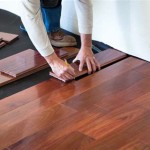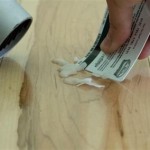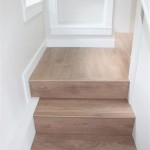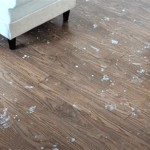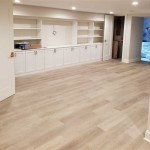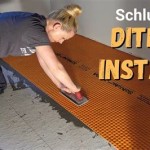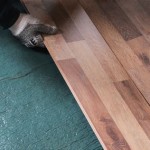How Much Do Wood Floors Cost To Install?
The installation of wood floors is a significant home improvement project that can dramatically enhance the aesthetic appeal and overall value of a property. However, understanding the associated costs is crucial for budget planning and making informed decisions. The total cost of wood floor installation encompasses various factors, including the type of wood, labor expenses, subfloor preparation, and any additional materials required. This article provides a comprehensive overview of these factors to help homeowners estimate the potential expenses involved in installing wood floors.
Types of Wood Flooring and Their Impact on Cost
The selection of wood flooring significantly influences the overall project cost. Different types of wood offer varying levels of durability, aesthetics, and price points. Broadly, wood flooring can be categorized into solid hardwood, engineered hardwood, and laminate, each with its own set of characteristics and associated costs.
Solid hardwood flooring consists of planks milled from a single piece of wood. It is known for its longevity, natural beauty, and ability to be refinished multiple times, extending its lifespan significantly. Popular hardwood species include oak, maple, cherry, and walnut. Oak is generally the most affordable option, while exotic hardwoods such as Brazilian cherry or teak can be considerably more expensive due to their scarcity and unique grain patterns. The cost of solid hardwood flooring can range from $5 to $15 per square foot for the material alone. Installation costs for solid hardwood typically range from $3 to $8 per square foot, bringing the total cost to $8 to $23 per square foot.
Engineered hardwood flooring consists of a thin layer of hardwood veneer bonded to a core of plywood or high-density fiberboard (HDF). This construction makes it more dimensionally stable than solid hardwood, meaning it is less susceptible to expansion and contraction due to changes in humidity and temperature. Engineered hardwood is a versatile option suitable for installation in various areas of the home, including basements and over concrete slabs. While the top layer provides the aesthetic appeal of solid hardwood, the core construction often makes it a more economical choice. The cost of engineered hardwood flooring typically ranges from $3 to $12 per square foot for the material. Installation costs generally range from $2 to $5 per square foot, resulting in a total cost of $5 to $17 per square foot.
Laminate flooring is a synthetic product designed to mimic the appearance of wood. It consists of a photographic layer of wood grain covered by a clear protective layer. Laminate is a budget-friendly option, offering a wide variety of styles and colors. It is relatively easy to install and maintain, making it a popular choice for homeowners seeking an affordable and practical flooring solution. However, it lacks the authentic look and feel of real wood and cannot be refinished. The cost of laminate flooring typically ranges from $1 to $5 per square foot for the material. Installation costs generally range from $1 to $3 per square foot, bringing the total cost to $2 to $8 per square foot.
Labor Costs and Installation Methods
Labor costs represent a significant portion of the overall wood floor installation expenses. These costs depend on several factors, including the complexity of the installation, the size of the area to be covered, and the prevailing labor rates in the region. Additionally, the chosen installation method can influence the labor cost.
There are several methods for installing wood flooring, each with its own level of complexity and associated labor costs. The most common methods include nail-down, glue-down, and floating.
The nail-down method is typically used for solid hardwood flooring. In this method, the wood planks are nailed directly to the subfloor using a flooring nailer. This method provides a secure and stable installation, but it requires a wooden subfloor and experienced installers. Nail-down installations are generally more labor-intensive than other methods, resulting in higher labor costs. Expect to pay between $3 and $8 per square foot for labor to install solid hardwood using the nail-down method.
The glue-down method involves adhering the wood planks directly to the subfloor using a specialized adhesive. This method is suitable for both solid and engineered hardwood flooring and can be used over concrete subfloors. The glue-down method provides a strong and durable bond, but it requires careful subfloor preparation and precise application of the adhesive. Glue-down installations also tend to be labor-intensive, and may cost between $3 and $7 per square foot for labor.
The floating method is primarily used for engineered hardwood and laminate flooring. In this method, the wood planks are not directly attached to the subfloor but are instead connected to each other using a tongue-and-groove system. A thin foam underlayment is typically placed between the flooring and the subfloor to provide cushioning and sound insulation. The floating method is generally the easiest and fastest installation method, resulting in lower labor costs. Installation costs can be lower, ranging between $2 and $5 per square foot for labor.
The removal of existing flooring can also add to the labor costs. Depending on the type of flooring and the ease of removal, this can add $1 to $3 per square foot to the total project cost.
Subfloor Preparation and Additional Costs
Proper subfloor preparation is essential for a successful wood floor installation. A level, clean, and dry subfloor provides a stable base for the flooring and prevents problems such as squeaking, warping, or buckling. Subfloor preparation may involve leveling uneven areas, repairing damaged sections, and cleaning the surface to remove debris and contaminants. Failure to properly prepare the subfloor can lead to costly problems down the line, making it a critical aspect of the installation process.
Leveling the subfloor may involve using self-leveling compound or plywood shims to create a smooth and even surface. The cost of leveling the subfloor can range from $1 to $5 per square foot, depending on the extent of the work required. Repairing damaged sections of the subfloor may involve replacing rotted or water-damaged wood. The cost of subfloor repairs can vary widely depending on the severity of the damage, but it can range from $2 to $10 per square foot.
In addition to subfloor preparation, there are other potential costs to consider when installing wood floors. These may include the cost of underlayment, trim and molding, and moving furniture. Underlayment is a thin layer of material placed between the subfloor and the flooring to provide cushioning, sound insulation, and moisture protection. The cost of underlayment typically ranges from $0.50 to $2 per square foot. Trim and molding are used to cover the edges of the flooring and create a finished look. The cost of trim and molding can vary depending on the material and style, but it typically ranges from $2 to $5 per linear foot. Moving furniture can also add to the overall cost, especially if professional movers are required. The cost of moving furniture can vary depending on the amount and size of the furniture, but it can range from $100 to $500 or more.
Geographic location also plays a role in determining the overall cost. Labor rates and material prices can vary significantly depending on the region. Areas with a higher cost of living tend to have higher labor rates, while areas with abundant natural resources may have lower material costs.
Permits may also be required for wood floor installation, depending on local regulations. The cost of permits can vary depending on the municipality, but it is typically a relatively small expense compared to the overall project cost. It is important to check with the local building department to determine if any permits are required before starting the installation.
Furthermore, it is prudent to factor in a contingency fund for unforeseen expenses. Unexpected issues, such as hidden subfloor damage or unforeseen material shortages, can arise during the installation process. Having a contingency fund of 5% to 10% of the total project cost can help cover these unexpected expenses and prevent budget overruns. This allows for flexibility in addressing any issues that may arise without disrupting the project timeline or jeopardizing the budget.

Hardwood Flooring Cost 2024 Per Square Foot Mk

Cost To Install Hardwood Flooring Floor Fixr

How Much Does Hardwood Flooring Cost 2025

Cost To Install Hardwood Flooring Floor Fixr

Cost To Remove Hardwood Floors Mk Remodeling

Hardwood Flooring Installation Costs 2024

How Much Does Flooring Installation Cost 2025

How Much Does It Cost To Install Wide Plank Floors Floor Supply

Cost Of Installing Hardwood Floors Top 2024 Guide

How Much Does Flooring Installation Cost 2025
See Also
